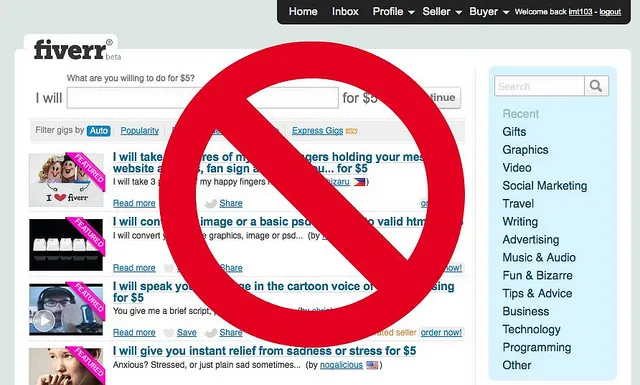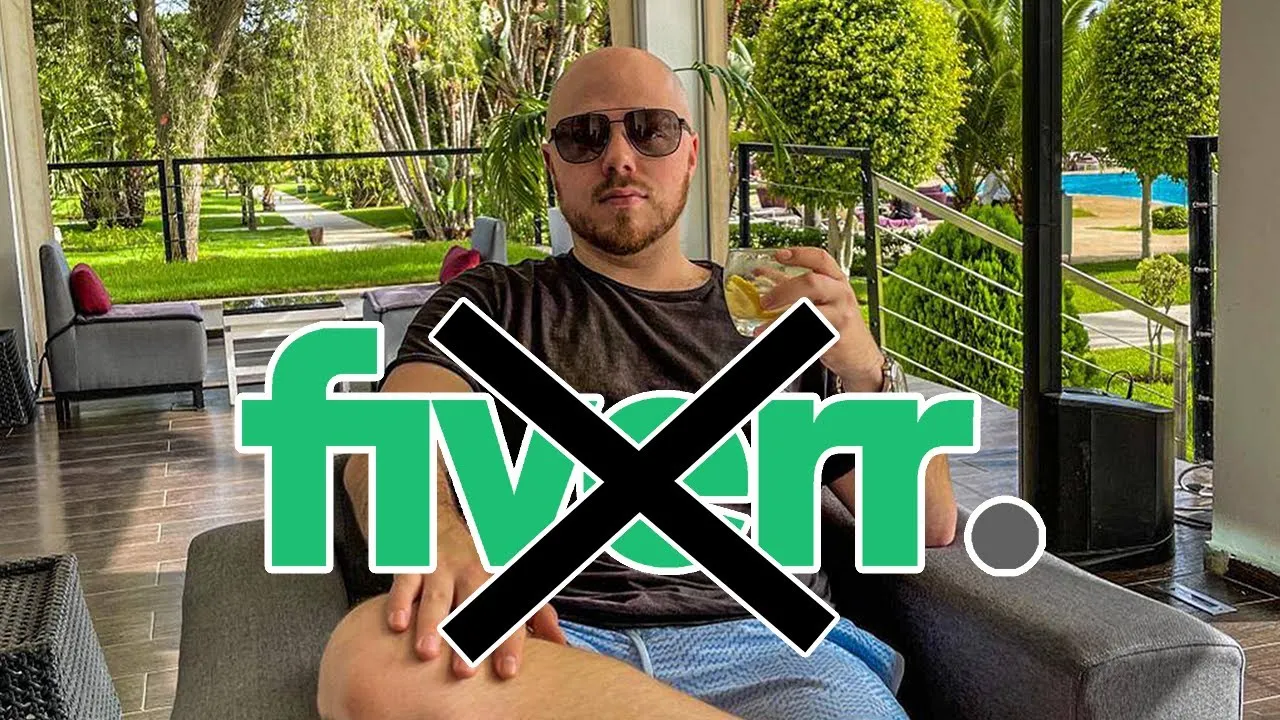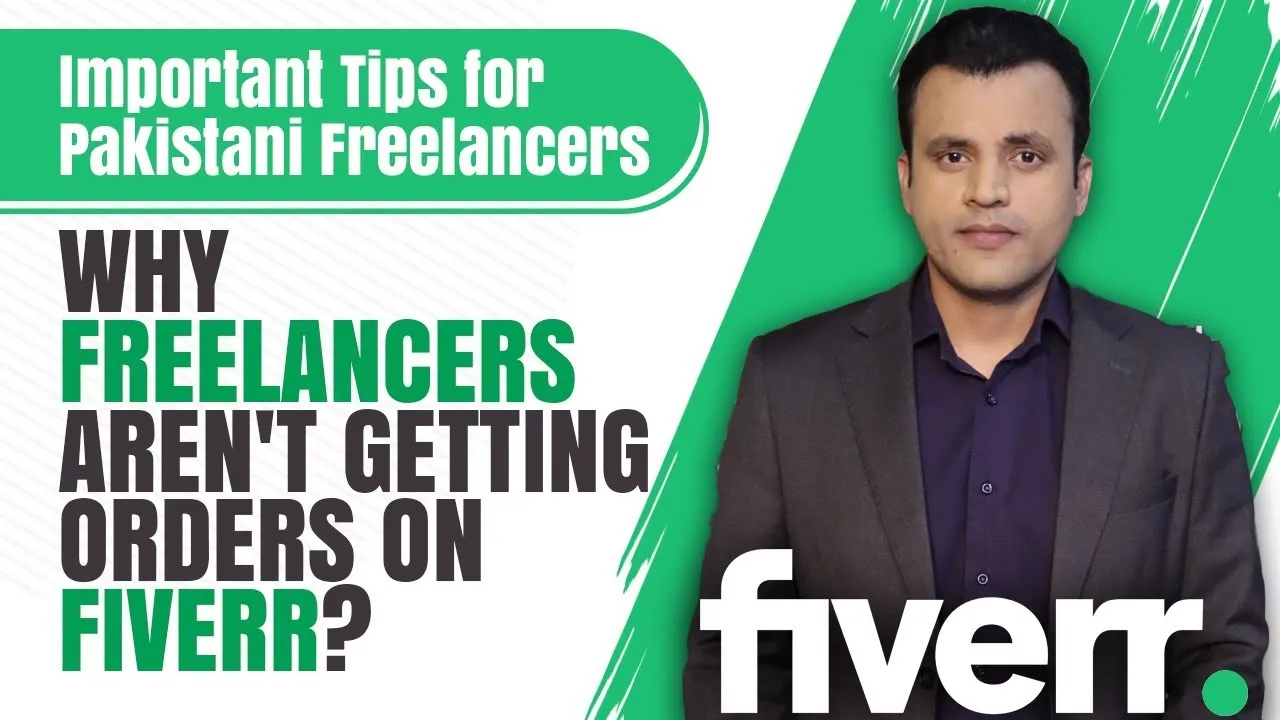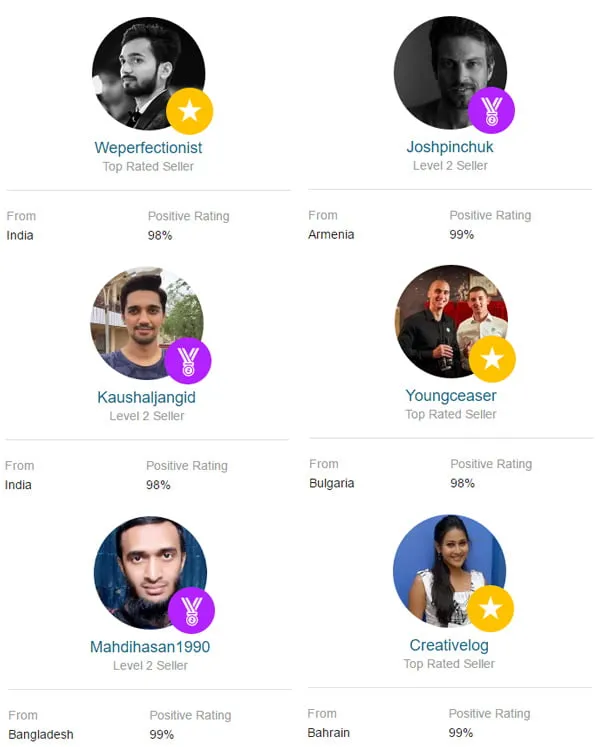Fiverr has become a go-to platform for many freelancers and those looking to hire talent. But while it may seem like a dream come true for some, many freelancers have found that Fiverr has its drawbacks. In this post, we’ll explore the reasons why Fiverr might not be the best choice for freelancers and what challenges they face on the platform.
Understanding Fiverr: A Brief Overview

Fiverr is a global marketplace that connects freelancers with clients in need of various services, ranging from graphic design to writing and programming. Launched in 2010, it has transformed the freelancing landscape by offering a platform where services, or “gigs,” can be purchased starting at just five dollars. But what does that really mean for freelancers?
To give you a clearer picture, here are some key features of Fiverr:
- Wide Range of Services: Fiverr caters to a multitude of industries, making it easy for freelancers to offer their skills.
- Simple Listing Process: Freelancers can create a gig in a minimal amount of time, posting details about their services, prices, and delivery timelines.
- Buyer-Seller Interaction: The platform facilitates communication between buyers and sellers allowing for negotiations and clarifications about services.
- Rating System: Fiverr utilizes a review system that allows buyers to rate their experiences, helping others make informed decisions.
But, while these features may sound appealing, they also come with some significant caveats. The low starting prices, intense competition, and limited client relationships can make it a rocky road for freelancers trying to establish a sustainable career. In the next sections, we’ll dive deeper into the specific challenges freelancers face while using Fiverr.
Also Read This: Do All Fiverr Gigs Need Approval?
The Challenges Freelancers Face on Fiverr

Freelancing on Fiverr can be a double-edged sword. While it opens up a world of opportunities, it also presents a unique set of challenges that can make the experience frustrating for many freelancers. Let’s break down some common hurdles they encounter:
- Intense Competition: With thousands of freelancers offering similar services, standing out becomes increasingly difficult. It’s not uncommon for new sellers to find themselves lost in a sea of profiles, making the quest for clients tougher.
- Pricing Pressure: To compete, many freelancers feel compelled to lower their rates, often leading to a race to the bottom. This can be detrimental in terms of earning potential and undervaluing one's expertise.
- Inconsistent Income: Given that freelancers often rely on a gig-based income, the pay can be unpredictable. A freelancer may experience dry spells where they struggle to find new clients or projects.
- Client Expectations: Many clients on Fiverr may not understand the intricacies of the services they are purchasing. This can lead to unrealistic demands and poor communication, creating stress for freelancers.
- Limited Control Over Projects: Freelancers often find that clients dictate the terms, which can lead to situations where freelancers feel unfulfilled or overworked in line with those expectations.
In summary, while Fiverr provides a platform to showcase skills, the challenges freelancers face can sometimes overshadow the benefits, leaving individuals questioning if it's worth their time and effort.
Also Read This: Building a Career as a Freelance Book Editor
Quality of Work and Accountability

When it comes to quality, Fiverr is a mixed bag. You can find outstanding talent, but the platform also has its share of mediocre work. Here are some insights into the quality of work and accountability on Fiverr:
- Diverse Skill Levels: There’s no denying that Fiverr hosts freelancers with varying degrees of expertise. While some providers deliver exceptional results, others may fall short, leaving clients disappointed.
- Accountability Issues: One of the main frustrations is that freelancers sometimes lack accountability. If a client is dissatisfied, it can lead to back-and-forth disagreements, making it hard to resolve issues amicably.
- Client Reviews: The review system can be both beneficial and detrimental. While positive reviews can boost a freelancer's credibility, negative ones can plague an otherwise competent freelancer, sometimes unfairly.
- Quality Control: Unlike traditional job settings, there’s little in the way of oversight. Freelancers are often left to self-manage, which can lead to variable quality levels.
- Rush Jobs: Many freelancers, in a bid to compete for jobs, may rush their work. This can compromise quality and result in a subpar experience for both parties.
Ultimately, while Fiverr offers a platform for freelancers to showcase their skills, the inconsistency in quality and accountability issues can make it a daunting space to navigate. Finding a balance between quantity and quality remains a persistent challenge for both freelancers and clients alike.
Also Read This: What is Fiverr Service Fee?
Fiverr's Fee Structure: A Double-Edged Sword

Ah, the infamous fee structure of Fiverr! If you’re a freelancer dipping your toes into this platform, you might find the fee situation to be a bit of a mixed bag. On one hand, it offers a straightforward setup; on the other hand, it can feel like a soggy sandwich when you realize how much of your hard-earned cash fades away.
Here’s the scoop:
- Service Fees: For every gig you sell, Fiverr charges a hefty 20% commission. Yes, you read that right—20%! Imagine working on a project for $100 and only taking home $80 after Fiverr takes a cut. Ouch, right?
- Payment Processing Fees: Beyond the commission, freelancers also face payment processing fees when cashing out their earnings. These can vary depending on the payment method and can add extra pennies to the overall costs.
- Buyer Protection Costs: Fiverr offers buyer protection, which is great for clients but frequently shifts the financial burden onto the freelancer. This can create a competitive disadvantage, especially if you’re new to the game.
In essence, while Fiverr provides a platform for getting work, the fee structure can feel like a double-edged sword—opening doors but also taking a hefty slice of your potential profits. You might be left wondering whether it's truly worth it or if you could do better elsewhere.
Also Read This: Strategies for Making Money as a Freelance Writer
Alternatives to Fiverr for Freelancers
Finding the right platform for freelance work can be a daunting task, especially if you’ve started to feel that Fiverr isn’t quite cutting it. Fortunately, there are plenty of alternatives that might suit your needs better. Let's dive into a few popular options:
| Platform | Pros | Cons |
|---|---|---|
| Upwork | Higher paying projects, a wide range of categories. | More competition, complex fee structure. |
| Freelancer | Global reach, various job types. | High fees, unpredictable job quality. |
| Guru | Flexible payment options, user-friendly interface. | Lower volume of jobs. |
| PeoplePerHour | Focus on hourly rates, strong UK presence. | Limited to fewer categories. |
Choosing the right platform can drastically affect your freelancing journey. Option for a platform that aligns with your unique skills and financial goals can open new avenues of opportunity. Whether you’re a designer, writer, or musician, there’s a place out there that’s perfect for you; you just have to take the plunge and explore!
Why Fiverr Sucks for Freelancers
Fiverr has gained immense popularity as a freelancing platform, but many freelancers have voiced their dissatisfaction with its model. While it offers a plethora of opportunities, there are multiple factors that contribute to the growing sentiment that Fiverr is not a viable option for serious freelancers. Below are some of the reasons why freelancers may find Fiverr less than satisfactory:
- High Competition: With thousands of freelancers competing for the same gigs, it becomes incredibly difficult to stand out. Newer freelancers often resort to pricing themselves low, which drives down the value of services across the board.
- Low Pay: Many gigs start at just $5, making it tough for freelancers to earn a sustainable income. Even skilled professionals may find themselves underpaid for the quality of work they deliver.
- Limited Client Interaction: Fiverr’s model often limits how freelancers can interact with clients. This lack of communication can lead to misunderstandings and unsatisfied clients.
- Service Fees: Fiverr takes a substantial cut from each transaction (20% as of my last update), significantly reducing the net income for freelancers.
- Quality Control Issues: The platform is notorious for inconsistent quality. Clients sometimes face challenges with poorly executed work, which can reflect poorly on freelancers.
In addition, Fiverr's focus on quick transactions can deter freelancers from establishing long-term relationships with clients, limiting potential exploring robust work and collaboration opportunities.
Conclusion: Is Fiverr Worth It for Freelancers?
While Fiverr can offer a way to gain initial exposure, the challenges of competition, low pay, and fee structures make it less appealing for serious freelancers looking to build a sustainable career.



